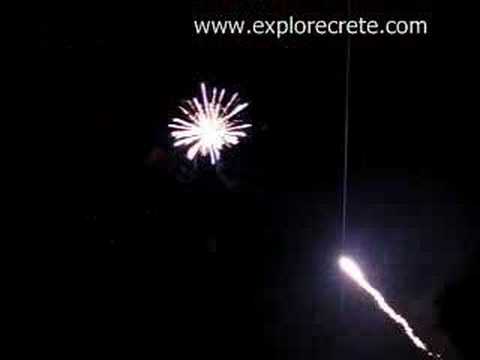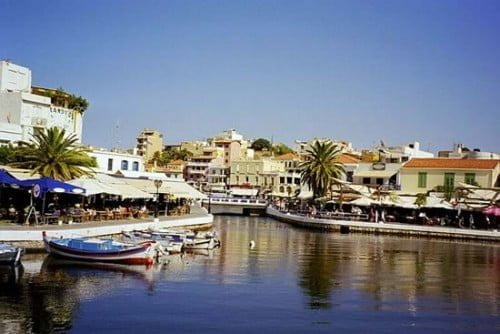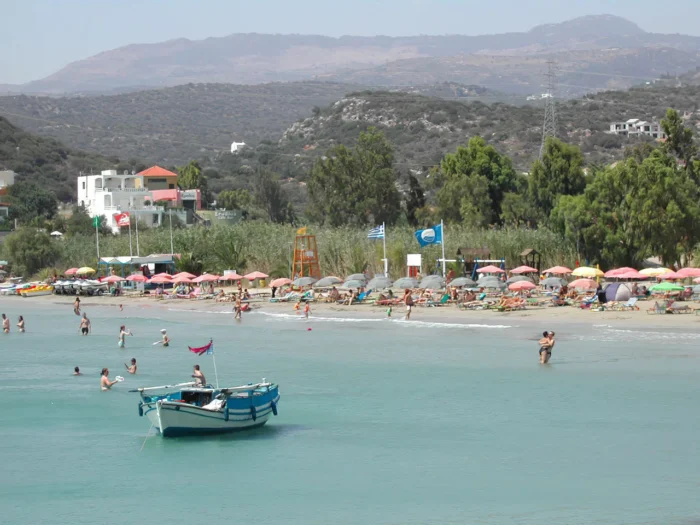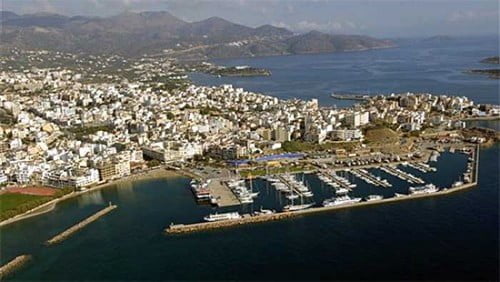Kazarma fortress in Sitia
The Kazarma Fortress in Sitia
The Kazarma Fortress in Sitia stands high above the town and is visible from the beach. It was built by the Venetians in the 13th century as the guard barracks, the Casa di Arma, a name corrupted to Kazarma.
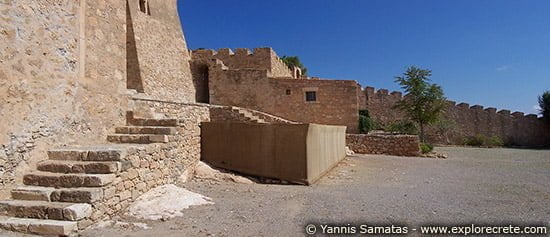
According to contemporary Venetian plans, Sitia was surrounded by a wall running from the south side of the town and the Roman cisterns to the upper part of the Kazarma Fortress, on the west side of the town. This section, triangular in shape, formed the Castello of Sitia.
The neighbourhoods outside the walls were left undefended and extended east of the town.
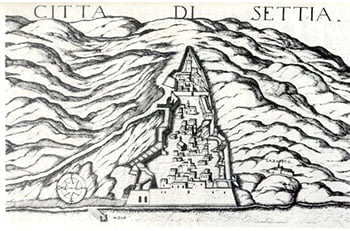
The Kazarma Fortress was the main defensive fortification of Sitia, but it was badly damaged by frequent pirate raids and invading forces.
In 1303 it was partly destroyed by an earthquake which struck the area, and was rebuilt without regaining its former power.
In 1508 it was badly damaged by another major earthquake, while in 1538 Barbarossa invaded Sitia and destroyed most of the fortress.
In the 16th century, the Venetians embarked on a programme of major fortification works across Crete.
At the time, Sitia was completely unfortified but the local Venetian administration send money for repairs to the fortress in 1555. Some work was carried out but again the fortress regained neither its former glory nor its strength.
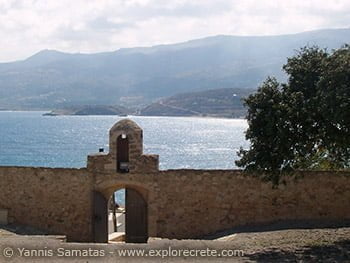
When the Turks invaded Crete in 1645, the Venetian General Mocenigo decided that the fortress could not protect the city and withstand a siege, so he moved his men and equipment to Chandax (Heraklion) in 1651.
Turkish interventions to the Kazarma Fortress
The Turkish army took the Kazarma Fortress and turned it into a fort, making major changes to the interior of the structure. The new fort was built at the base of the Venetian castle.
What visitors to the fortress see today is the north and east section of the original enclosure, a few rooms inside the enclosure, and the tower, which no longer has a roof.
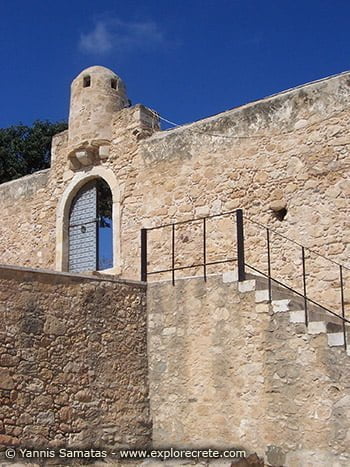
In the fortress you can see traces of a two-storey building which no longer exists, and an interior corridor.
Visitors can also see the Turkish additions, such as the koubedes (domes) on the guardhouses.
The Kazarma Fortress is built on a hill, making it even more imposing.
On entering the enclosure, you see two staircases leading to the main arched gate of the fortress. Inside the courtyard is a building with three rooms and a saddle roof, considered a Turkish addition.
In the west part of the fortress is a small building with a hearth, probably the cookhouse.
During the Turkish period, the walls around the fortress were not rebuilt, but the Kazarma Fortress itself was restored relatively recently and opened to the public.
The fortress was the property of the Civil Aviation Authority until 1966, when it was declared a listed historical monument and the first serious efforts were undertaken to restore it.
Kazarma Fortress – Opening Hours
The Kazarma Fortress is open daily except Mondays, offering a stunning panoramic view of the town of Sitia.
The opening hours are:
1 November to 31 March: 08:30 – 15:00, Mondays closed.
1 April to 31 October: 08:30 – 19:30, Mondays closed.
Kazarma is a peaceful, imposing place, giving visitors a sense of its history and rich past.
Various cultural events, concerts and plays are held at the fortress, as part of the Kornareia Festival in honour of the great poet of Sitia, Vitsentzos Kornaros.
© explorecrete.com All Rights Reserved. Reproduction or copying without permission is prohibited.

